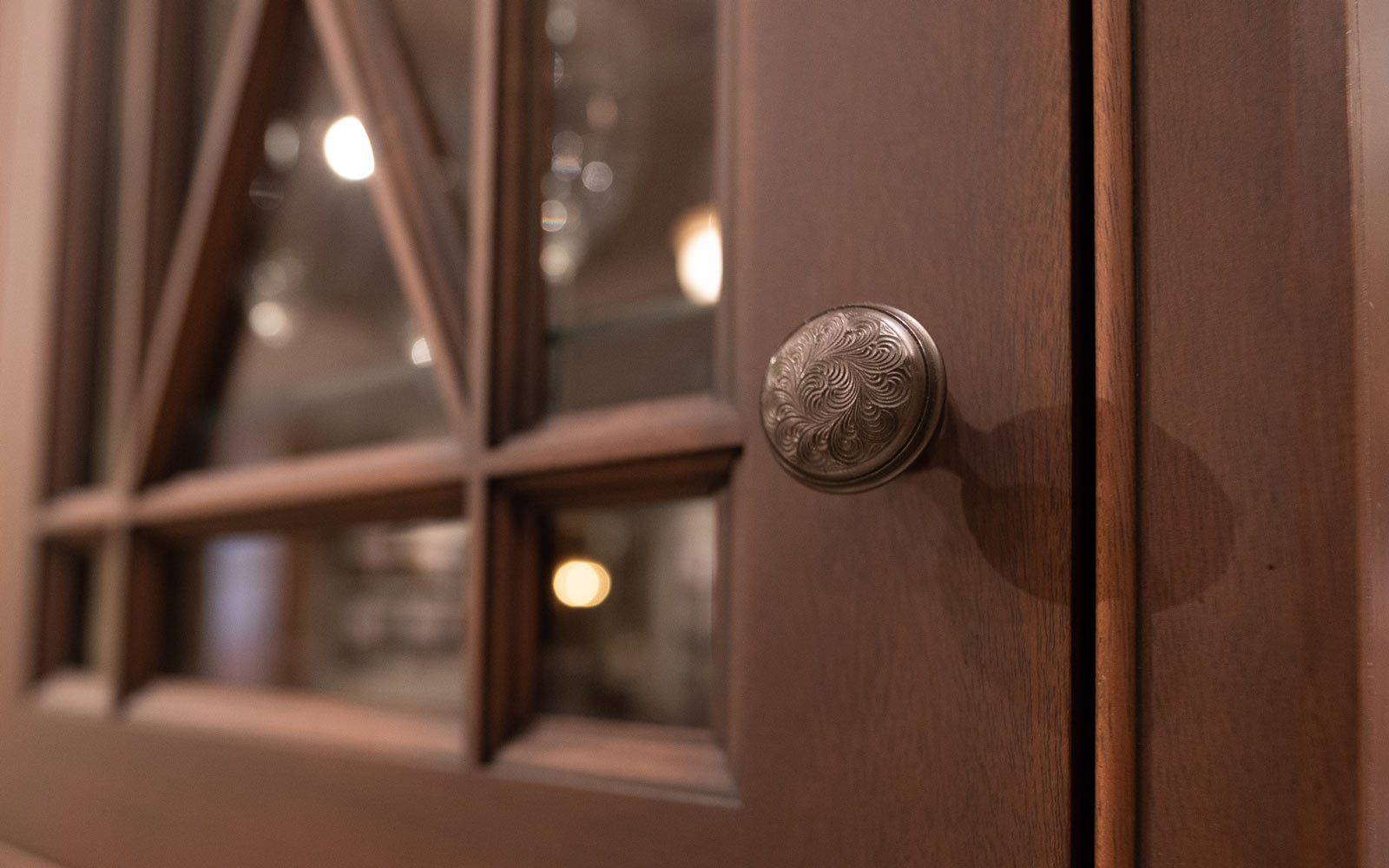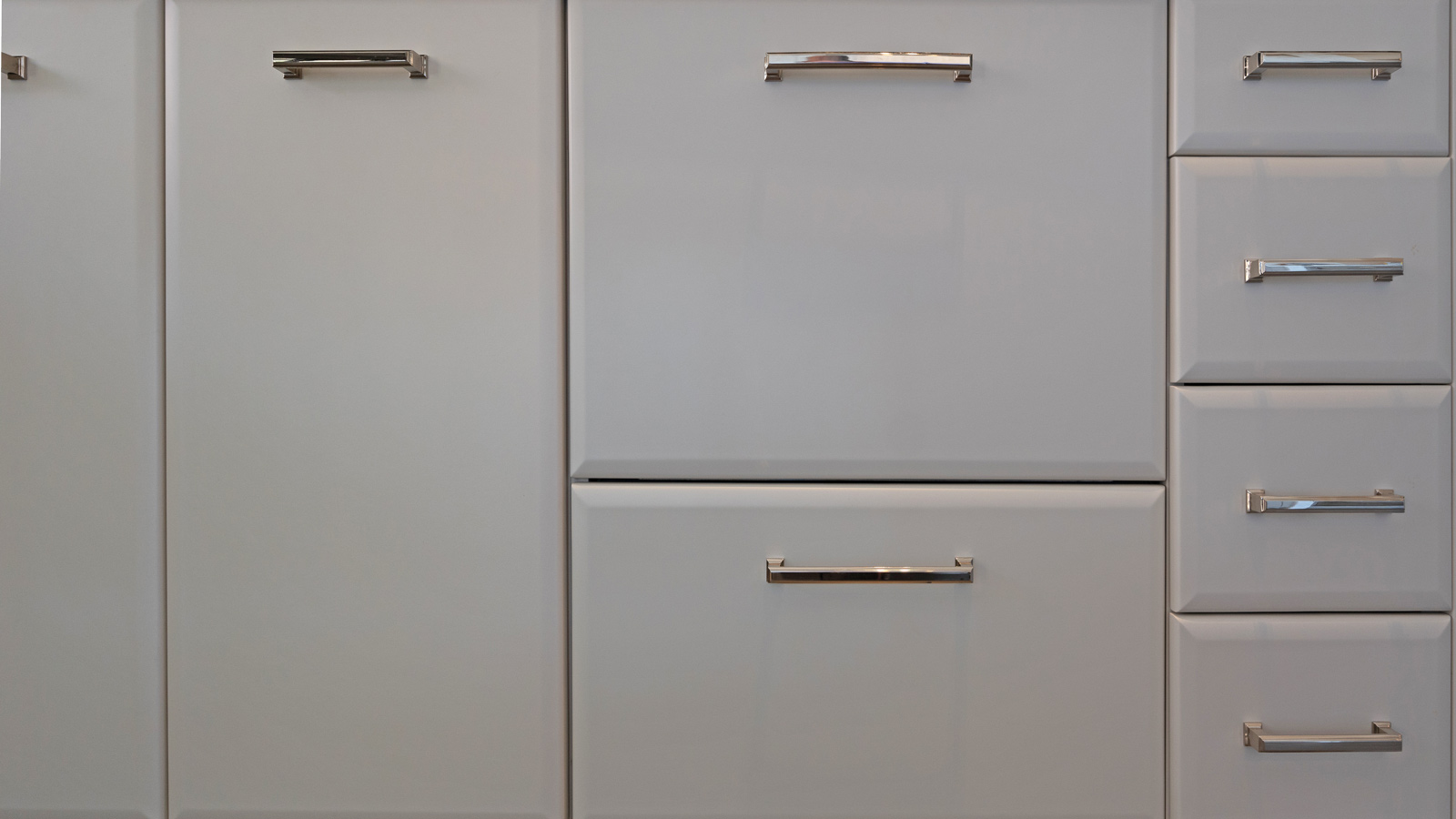How to Choose Kitchen Hardware
How to Choose Kitchen Hardware
Brushed or polished? Nickel or Brass? Knobs or pulls?
How do you know which kitchen hardware is right for your kitchen? This article will walk you through the types and styles of hardware to choose from, and the questions you should be asking yourself as you decide what’s right for you!
Types of Kitchen Hardware
Kitchen hardware starts with drawer handles and cabinet handles. There are two types: knobs and pulls
Cabinet Knobs vs. Cabinet Pulls
Knobs tend to be used in more traditional kitchen designs. They are simple and small. One drawback to knobs is that they may not be well suited for larger or heavier cabinetry, such as a pantry door.
Pulls are larger and can be more varied than knobs. There are many styles of U-shaped pulls that are used in both modern and traditional kitchens. Intricately carved pulls are better suited for traditional kitchens. Most pulls attach to the cabinet at two points – these should be used for heavier cabinets.
Don’t forget that you have the option to use both. You can use knobs for upper cabinets and pulls for drawers, lower cabinets, and pantries.
Modern Hardware Types
For contemporary kitchens, pulls can also be flush to the cabinet or drawer surface (installed with precision routing). Modern pulls can sleek, somewhat hidden or highlighted with a design element such as color to stand out.
Pulls can also be eliminated completely for ultramodern designs, sometimes with beveled grooves under doors and drawers to aid with opening.
How to Choose
Your hardware should take its cues from your kitchen’s overall design style. The three most popular kitchen design styles continue to be contemporary, transitional and natural/organic.
Knobs or Pulls
If you have a traditional-style kitchen, you may wish to choose knobs over pulls as they are small, simple and are common in traditional kitchens.
Intricately carved pulls have a place in traditional design, too – they can contribute to a vintage feel in your kitchen.
Simple wire pulls, with the right finish, can also add a traditional, rustic look.
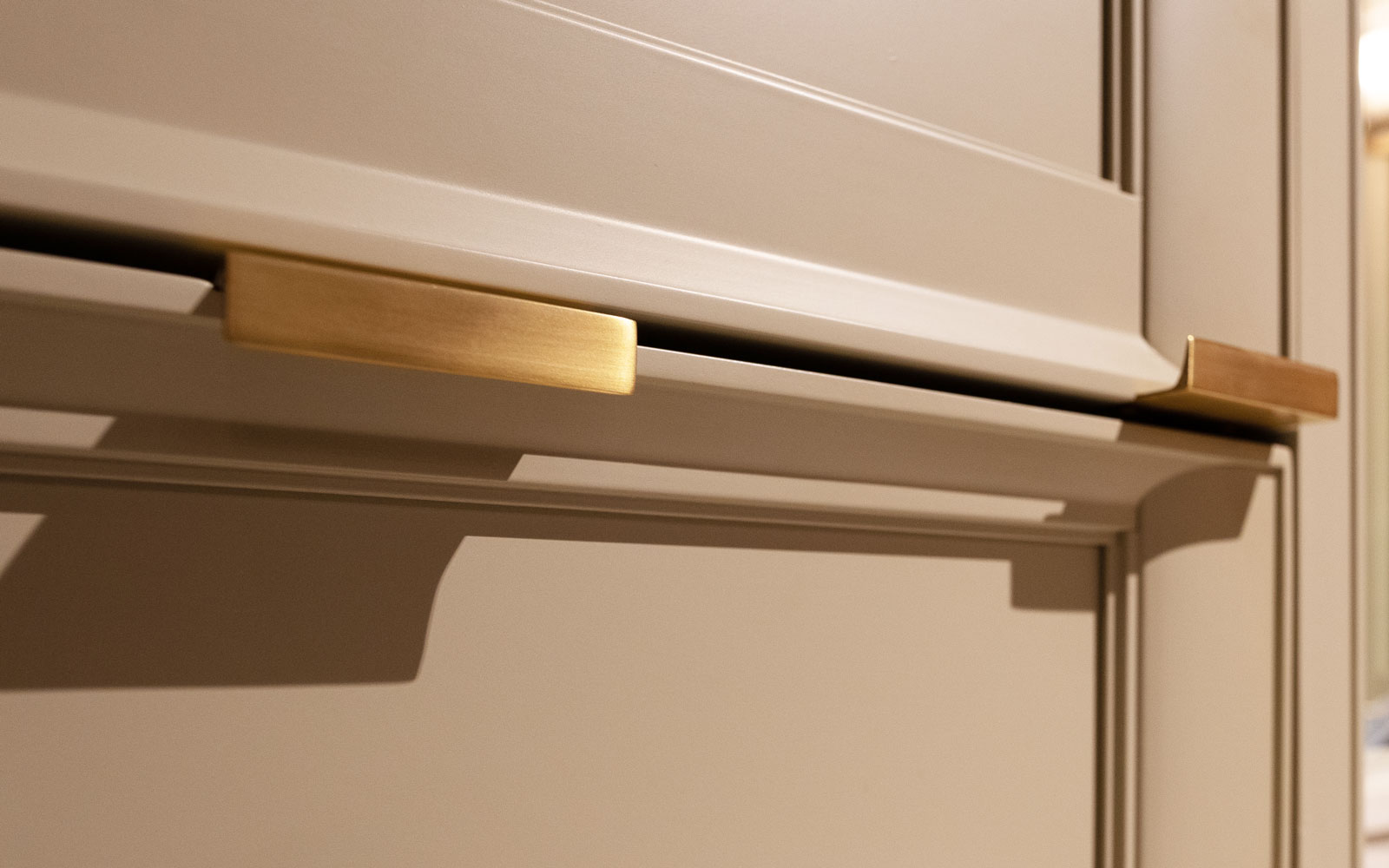
If your kitchen has a modern or contemporary design, you will likely opt for pulls. U-shaped and bar pulls have a sleek, modern look that integrates well with the smooth lines of modern kitchen designs. There is also an array of modern in-line pulls that blend near-seamlessly with cabinet door edges.
Finish Options for Kitchen Hardware
Now that you know about the general types of cabinet hardware, let’s look at the different finish options that are available.
Metal Finishes
You’re probably more familiar with metal-finished hardware – you’ll see it in all kitchen design styles from traditional to contemporary to various hybrids in-between. Metal finishes include steel, brushed nickel, polished nickel, rustic pewter, chrome, brass, bronze-toned and gold-toned metals. Any of these will work in a traditional kitchen. Modern kitchens tend to feature sleek metal finishes like steel, chrome and brass.
If your traditional kitchen has rustic leanings, consider rustic pewter for a farmhouse kitchen look. Oh, and it’s true that brass and copper hardware can impede bacterial growth – it’s called the oligodynamic effect.
For a contemporary look, choose a sleeker metal such as steel, brushed nickel, chrome or brass.
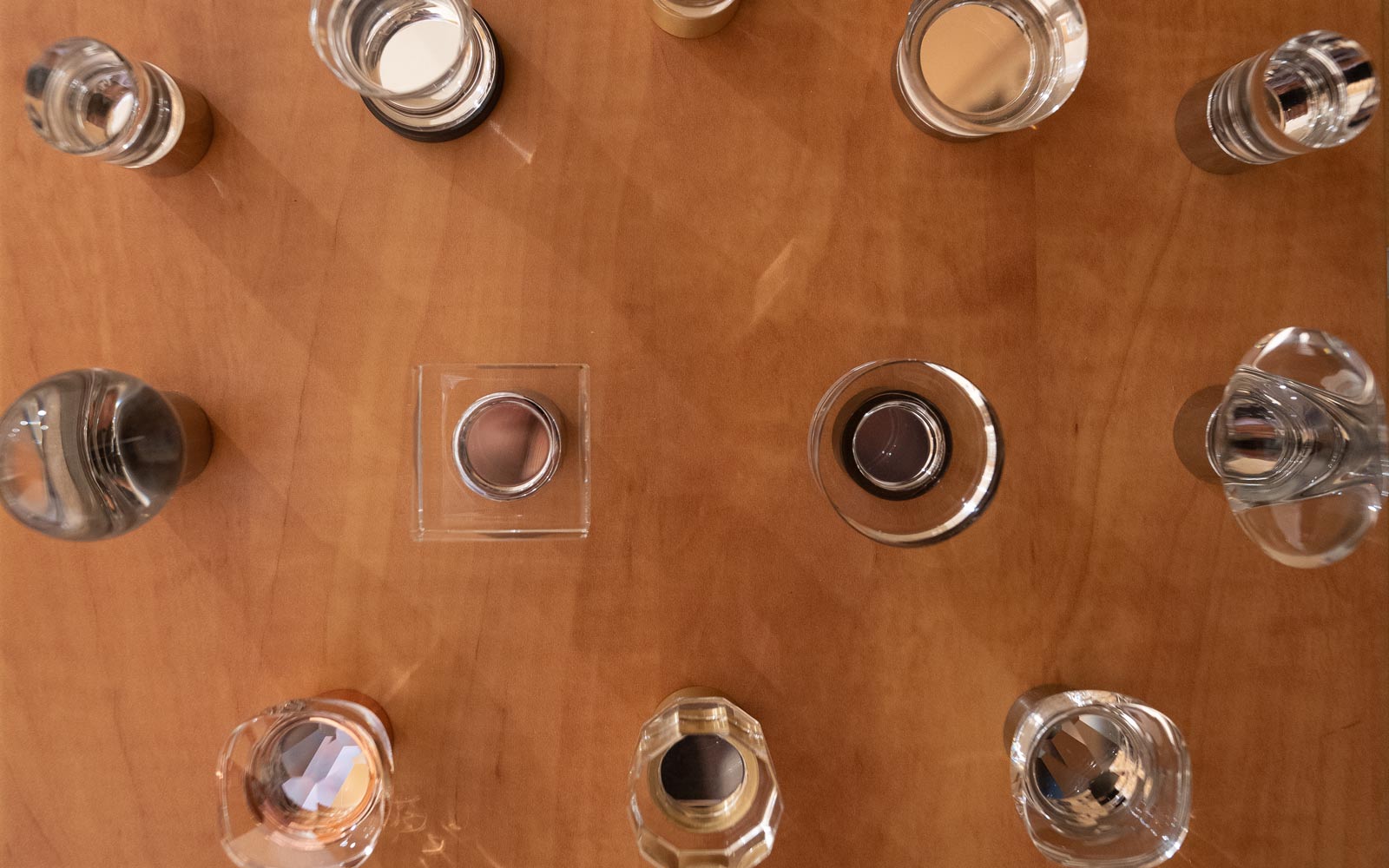
Nonmetal Finishes
Nonmetal hardware includes knobs and pulls made from ceramics, wood and glass (including tinted and mirrored glass).
Glass and ceramic are ideal for a certain vintage looks.
Intricately carved wooden handles and handles with touches of leather can also add a hand-crafted element to your traditional kitchen.
Some designers rely on nonmetal finishes, particularly glass and ceramic, to add bright colored accents to kitchens.
Kitchen Hardware Placement Ideas
Now that you’ve picked your hardware type and finish, where exactly do you place it?.
Drawer Handle Placement
Placement is the simplest decision you will have to make when adding your drawer handle. It always goes in the middle!
For pulls and knobs, place the knob directly in the center of the drawer both vertically and horizontally. An exception to this may be for extra-long drawers, in which case you may choose to place two knobs. The general rule for this is to divide the drawer into thirds.
Cabinet Handle Placement
With cabinet doors, fight the instinct to place hardware in the corners with an equidistant placement in relation to the vertical and horizontal edges. This is indeed a preference for some people, but most designers will place the knob a little bit further from the top or bottom of the cabinet compared to the side. Do this by centering the knob in relation to the corner first, then move it upward or downward depending on whether it is an upper or lower cabinet. Follow the same rule for a cabinet door pull. The pull should be slightly further from the top or bottom of the cabinet than it is from the side.
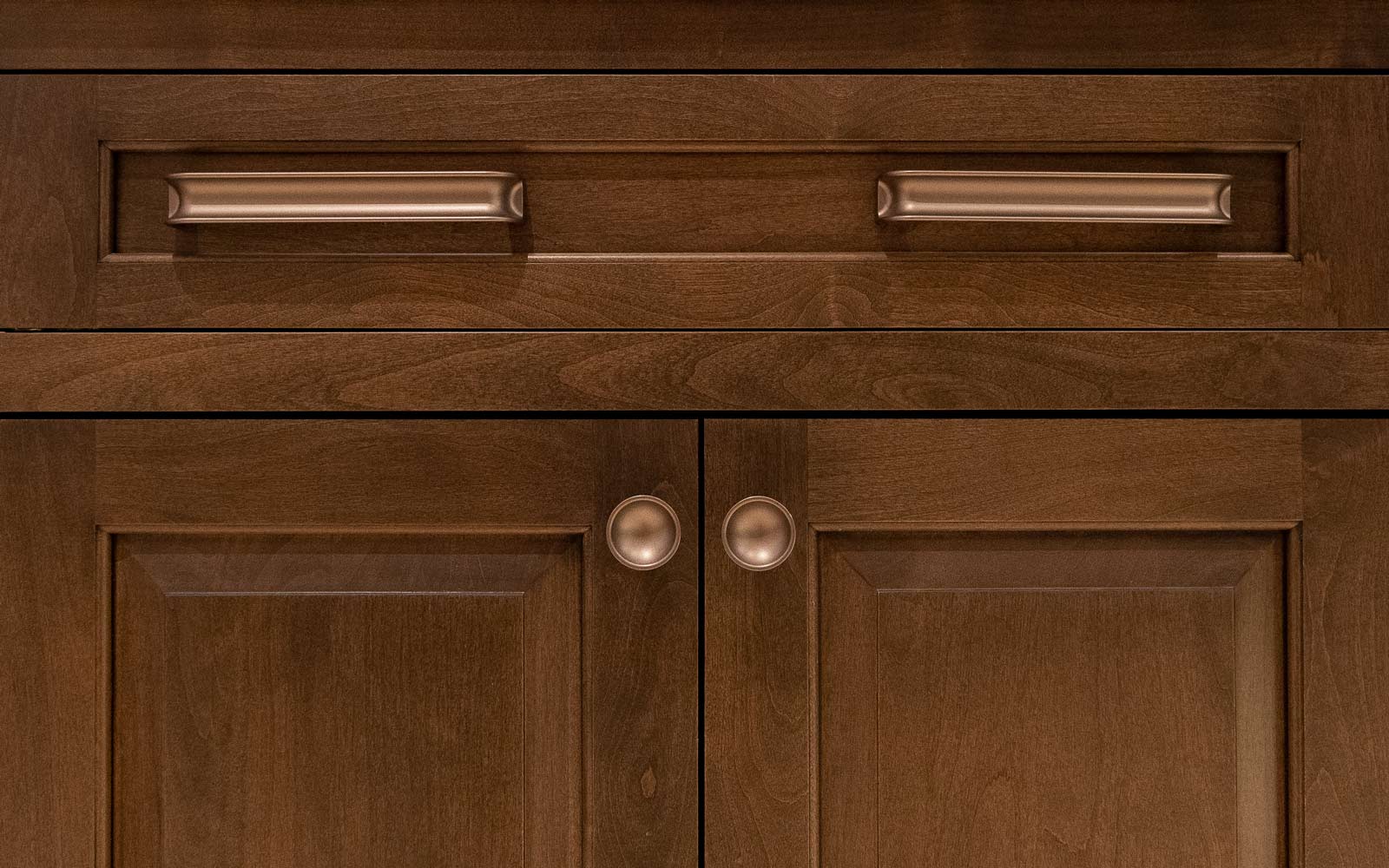
Kitchen Hardware Inspiration
While it seems simple, choosing your kitchen hardware is actually a very important element in perfecting your kitchen design. With your new knowledge of knobs and pulls, metal and nonmetal finishes, and hardware placement, you are well on your way to deciding that final touch to your kitchen!
Need some ideas for kitchen cabinet hardware? View our interior design portfolio gallery for inspiration!
Still overwhelmed by all the options available for your kitchen hardware? Request a design consultation with one of Drury Design’s superb designers!.
About Drury Design Kitchen and Bath Studio
Founded by Gail Drury, CMKBD in 1987, Drury Design’s Client Focused Design™ approach integrates design recommendations, materials selection, and construction management into one seamless customer design, project management, and build experience. For kitchen, bath, and home remodeling ideas view Drury Design’s design portfolio or stop by the studio at 512 N. Main Street in downtown Glen Ellyn, Illinois.

